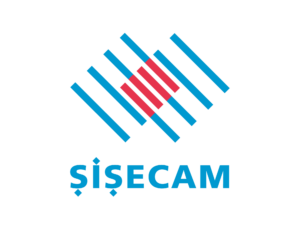Every startup founder should know the main characteristics of good term sheets for startups ahead of actual fundraising efforts, even if the investor is the one preparing it. Fully understanding term sheets will help you compare offers and discuss the term sheet intelligently with investors.
Getting professional legal help to advise you throughout the process is essential but it’s also important to understand the term sheet yourself so you can be certain you’re setting your company on the road to long-term success. One way to begin understanding term sheets is to find templates that generally match the needs of your particular situation and that investors will most likely provide you with. Then you can get a better sense of what goes into good term sheets for startups to create a win-win situation for both your company and investors.
How to read a term sheet by using a template
In most term sheet templates, you’ll see that the key terms include the valuation and all financial drivers of the investment, the rights of investors, and the deal closing process.
Most simple term sheets for startups follow the same outline and include the following sections:
- A brief paragraph that summarizes the principal terms and conditions.
- After the summary, the offering terms are addressed, including pre-money valuation, securities, investors involved, amount of the offering, the issuer of the document, closing date, and conditions for closing.
- Listing of the dividends including non-cumulative, cumulative, anti-dilution rights, and liquidation preferences.
- Participation rights.
- Board of Directors and voting agreements (provisions on how it will be structured and who will control critical Board votes).
- The option pool and share purchase agreement.
- Space for signatures and the date of the agreement.
To dive deeper into the meaning and ramifications of each of these particular terms, you can check out our in-depth guide for startup founders that includes a complete breakdown of each one.
re-money valuation is the valuation of the company before any investments are made. This economic term is linked to the idea of post-valuation which includes the pre-money valuation plus the amount of money raised in the round. This determines the percentage available to investors in the round.
Securities cover the type of securities being offered, for example, common or preferred membership interests, and the type of preferred such as convertible or participating. The series that is currently being offered such as Series A, B, C, etc will also be included.
The offering amount describes how much is being offered for investment within the series. The listing of the investors involved defines which investors are participating in the offering along with the offering amount. The listing of the dividends specifies the way that invested funds are distributed to investors.
The anti-dilution right is a clause that protects investors from dilution in their equity position. If the company’s business fails and ends up having to sell its assets the liquidation preferences dictate how the process will be undertaken.
General voting rights outline the voting rights of the equity being offered for certain major events such as the sale of the business or an initial public offering. The conditions for closing are the customary pre-conditions that are required for receiving investor funds, which typically include the completion of due diligence, the execution of a formal distribution agreement, and the delivery of closing certificates.
Unfavorable terms to avoid in a VC term sheet
Although it is an uncommon occurrence for a term sheet to contain lots of aggressive terms, there are some that you’ll need to watch out for. Here are some unfavorable ones that you may not want to agree to in a term sheet:
Super pro rata rights
Super pro rata rights give an investor the right to purchase a larger percentage of a company than their initial investment in subsequent rounds. For example, a VC that owns 10% of a company during the initial round can request 15% in the next round. This differs from regular pro rata rights that only give investors the ability to keep their current ownership amount through future rounds to protect their investment from being diluted.
Participating preferred liquidation preference
Participating preferred liquidation means that if a sale, merger, or acquisition takes place investors will receive their investment back at a multiple along with their proportional share of the remaining proceeds. Essentially, this is “double-dipping”. Common stockholders and founders only get their proportional share after investors get their first dip. This can contribute to an investor making money even in a lower valuation exit while the founders will end up with much less. A high multiple (e.g. 2x) is a potential red flag for the deal. A good compromise is a capped participating liquidation preference.
Accrued dividends
Accrued dividends (also called cumulative) give investors a specific annual return that is typically a percentage of the original per share price of preferred stock. Investors usually prefer cumulative dividends in order to get a minimum annual rate of return on their investment. It is often tied into the liquidation preference so that when a company is liquidated or sold it results in giving the holders of preferred stock their entire investment along with any accrued dividends.
Full-ratchet anti-dilution protection
Full-ratchet is the most drastic type of anti-dilution protection. Accepting this in your term sheet means that if funding is raised in the future at a reduced price than what is currently being paid, the investment made now will be repriced to that lower amount in the future. It’s less like a priced round than a loan with a cap. Full-ratchet anti-dilution can result in you selling more of your company than you originally thought if the next round is at a lower price.
It’s also important to keep in mind that a great valuation doesn’t necessarily compensate for disadvantageous terms. And remember that you can potentially renegotiate terms that are unfavorable with investors.
Where you can find sample term sheet templates
For first-time founders, the intricacies of a term sheet can be a bit overwhelming and include legal and technical jargon that’s not easy to understand. This is why it pays to become familiar with the main provisions and key terms even when you have professional help.
Here are some trusted places you can visit online to download a sample term sheet template in Word (or other file types) to look over:
- Y Combinator
- NVCA
Conclusion
Knowing how to understand and negotiate a term sheet is critical to ensuring the best outcome for your company. Most investors are motivated to achieve a fair deal that will meet both of your needs. But you can’t completely rely on the other party to keep your best interests in mind.
So, in addition to becoming familiar with the terms by looking at term sheet templates, you’ll want to consult with a lawyer to guide you through the process. Meanwhile, take the time to educate yourself so you’ll be prepared for discussions with both lawyers and investors.
Digify’s document security and data room services can help you manage all your confidential business documents during the due diligence and fundraising process. You can also send pitch decks and track them to get an indication of investors’ interest and be able to quickly follow-up. Feel free to sign up for a 7-day free trial to see if Digify’s services work for your startup’s needs.











